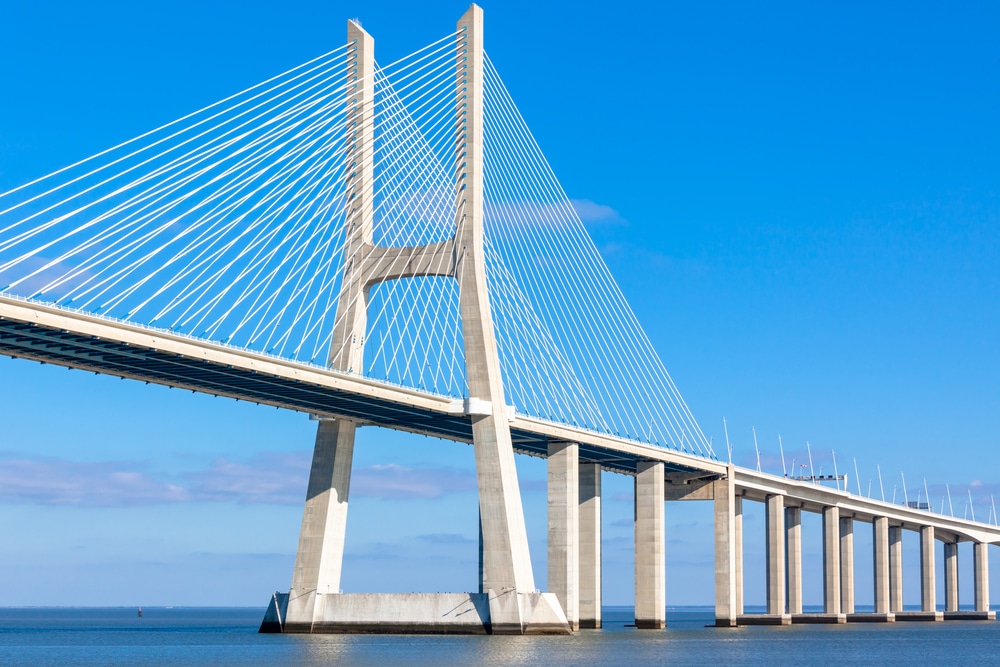The bridge rehabilitation process is essential for maintaining and improving bridge infrastructure and keeping people safe. From structural repairs to bridge deck replacement, bridge rehabilitation can help keep bridges safe and reliable for years to come.
But who and what exactly does bridge rehabilitation involve? We will cover the basics of bridge rehabilitation and discuss some common methods used in the process. We will also explore how city or state officials can ensure they get the most out of their investment in bridge projects. By understanding these fundamentals, you will have a better idea of how bridge rehab project should be handled – and by who.
rehabilitation is a process that involves the repair, reconstruction, and preservation of large concrete structures like bridges. It is important for these structures to be maintained properly so that they can remain safe for their intended use. In this blog post, we will also discuss why bridge rehabilitation is important, what it typically involves, and what you need to keep in mind.
Why Bridge Rehabilitation Is Important
Bridge rehab is necessary to ensure that bridges remain structurally sound and safe for use. If bridges are not regularly inspected and maintained, they can become unsafe and even collapse due to wear and tear or natural disasters. By investing in bridge rehabilitation now, you can help protect your community from the dangers of falling bridges in the future.
Who And What Does Bridge Rehabilitation Involve?
Bridge rehabilitation usually involves specialized concrete professionals’ inspection of the bridge’s structure followed by repairs or replacements of any damaged components. Concrete professionals, like those at JP Hogan Coring & Sawing, typically contribute to bridge rehab projects through one or several of the following services:
Concrete Scanning
Using ground penetrating radar technology, concrete contractors are able to identify the location and depth of any metallic or conduit materials encased within the bridge structure prior to rehabilitation. Examples of these materials include rebar, structural steel, or even prestressed cables.
Road Sawing
Applications include saw cutting any asphaltic, concrete or natural stone paving material to expand or control joints, provide controlled demolition, and reinforce concrete bridge infrastructure.
Core Drilling
For bridge rehab projects, applications include drilling vertical, horizontal, angled, compound angle, and even upside down communicative passageways through a concrete or brick deck structure for water or air to pass through.
Concrete Grooving
Another bridge-rehab-related service often provided by the concrete team is diamond grooving. Concrete grooving machines’ diamond blades create patterned grooves along a bridge deck for improved tire skid resistance and water drainage during inclement weather.
Depending on the extent of damage and required repairs, bridge rehabilitation projects can take anywhere from several weeks to several months to complete.
What To Keep In Mind When Considering Bridge Rehabilitation?
When considering a bridge rehabilitation project, it is important to consider all aspects of it from both a technical and financial standpoint. First, you will want to make sure that the project complies with all relevant building codes and regulations in order to ensure safety when completed. Additionally, you should assess how much funding will be needed for the project based on your budget constraints and determine if there are any grants or other sources of funding available that could help cover some of those costs. Finally, you should also factor in any environmental concerns that might arise during construction, such as air pollution or disruption of local wildlife habitats, so that these issues can be addressed before beginning work on the project.
Bridge rehab is an important part of maintaining our infrastructure safely over time so that communities have access to reliable transportation networks. Regular inspections followed by necessary repairs or replacements are essential for preserving these structures in the future. When planning a bridge rehabilitation project, it is important to take into account all factors. Factors include technical requirements, environmental impacts, and financial considerations. All of which ensure a successful outcome for everyone involved. If done properly, this type of project can benefit both communities and businesses alike by improving safety standards while still being cost-effective in nature.
Making the Most of Your Bridge Rehabilitation Project With JP Hogan
bridge rehab is a complex engineering and construction process that requires precision and technical expertise. With unmatched concrete experience, top-of-the-line equipment, and an un-compromised commitment to safety, JP Hogan guarantees high quality bridge rehabilitation results on time and within budget. Let us take a closer look at what sets JP Hogan apart from other bridge contractors.
JP Hogan’s proven track record has allowed us to successfully bid for and complete noteworthy bridge reconstruction and rehabilitation projects. These projects include the Verrazano- Narrows Bridge, Kosciusko Bridge, Goethals Bridge, and more!
Our prominence in the concrete industry has led to our recognition as a DBE by the Florida Department of Transportation as well as the Georgia Department of Transportation. Furthermore, we’ve maintained long-standing relationships with some of the largest Construction Management Firms and General Contractors in states – allowing us to showcase our talents in all the projects we complete.
Quality Concrete Services
JP Hogan is dedicated to delivering the highest quality concrete cutting, coring, and sawing services possible. Our team of experts have decades of experience in bridge reconstruction, demolition, rehabilitation, private development consulting, environmental compliance, surveying services, hydraulic analysis, and more. Each project is overseen by highly qualified engineers who are dedicated to ensuring your bridge rehabilitation project meets all safety standards set forth by the state or local municipality. We understand that it is not just about completing the project on time — it also needs to be done right.
Cost-Effective Solutions
Rehabilitation of the concrete elements of bridges is no small task — it takes an immense amount of planning, manpower, resources, and expertise. That is why JP Hogan strives to provide cost-effective solutions whenever possible. We combine modern materials with innovative technologies in order to minimize material costs while still delivering high quality results that will stand the test of time. Our goal is always to deliver maximum value for our client’s investments so they can rest assured knowing their projects were completed as efficiently as possible without sacrificing any quality or safety standards along the way.
For decades, JP Hogan has been providing bridge rehabilitation services with a commitment to quality engineering services delivered by knowledgeable experts. Cutting edge equipment and unmatched experience are the core of the company. Whether you are looking for a partner who understands your local government’s needs or needs help executing complicated construction projects on time and within budget — JP Hogan has you covered. Contact us today to learn more about how we can help meet your unique bridge rehabilitation needs.



